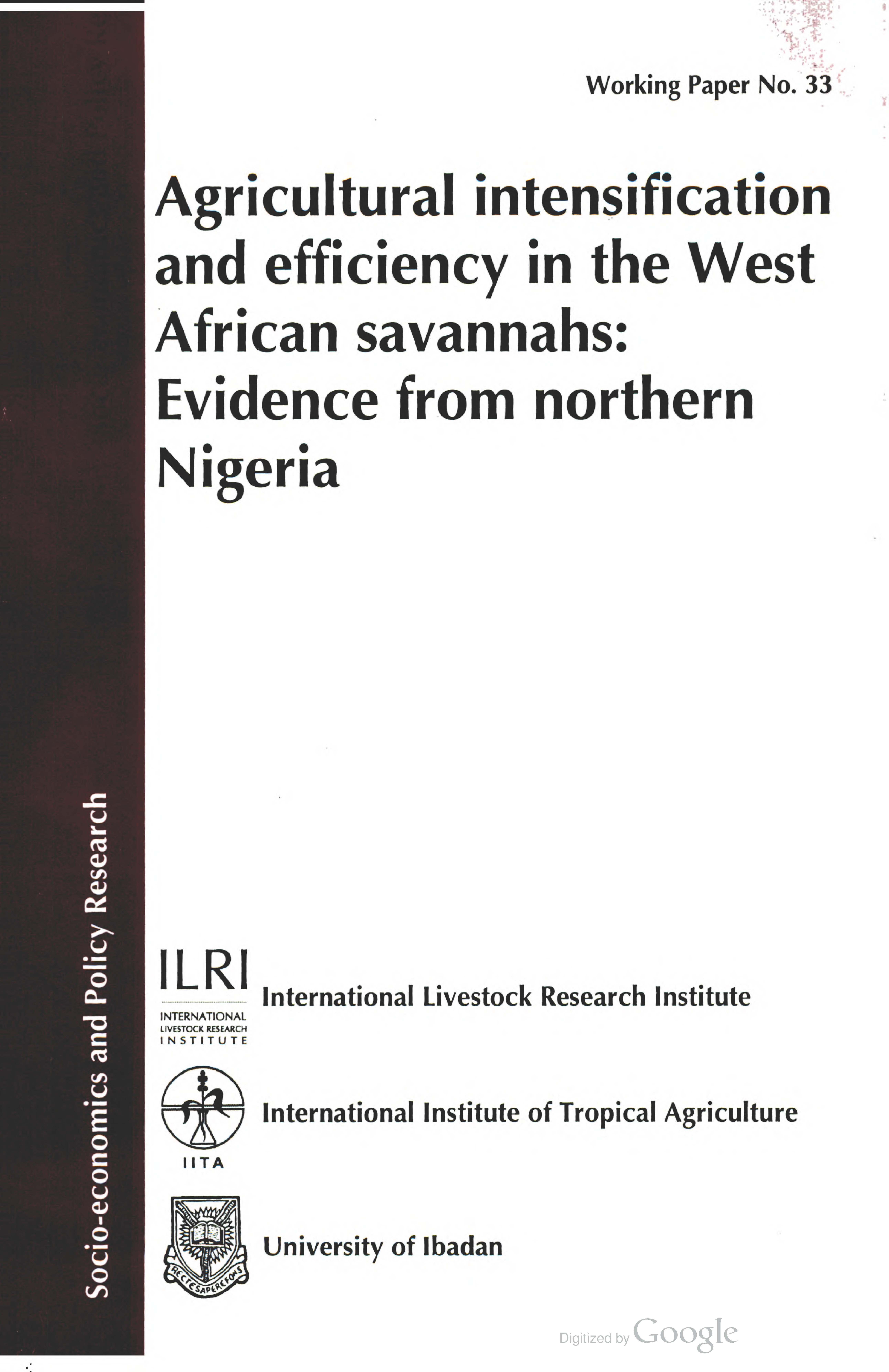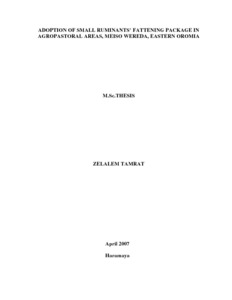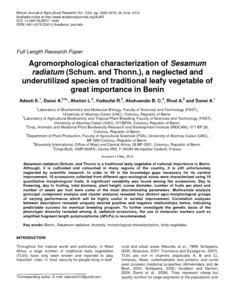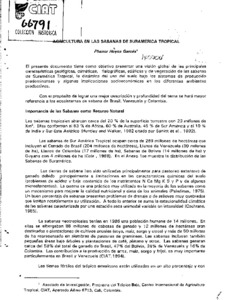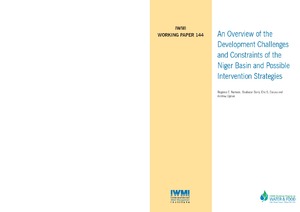Adoption of small ruminants’ fattening package in agropastoral areas, Mieso Wereda, Eastern Oromia
Many studies were conducted to identify determinants of adoption of crop base technologies and practices and improved seeds, and while few studies concerned on evaluation of extension services in terms of the clients’ need and interest or adoption of livestock technologies in agropastoral and pastoral context In fact, livestock extension services in general in developing countries are less prioritized and thus livestock based technology services are rarely extended Common livestock technologies which are promoted to livestock raisers are focused on feed, veterinary services, and improved ma
Agromorphological characterization of Sesamum radiatum (Schum. and Thonn.), a neglected and underutilized species of traditional leafy vegetable of great importance in Benin
Agricultura en las sabanas de suramérica tropical
Animal breeding and productivity studies in Africa
Summarises the work that ILCA is doing to assemble what information is available on livestock breeds and breeding in sub-Saharan Africa.
An overview of the development challenges and constraints of the Niger Basin and possible intervention strategies
The Niger River Basin covers 7.5% of the African continent, and is shared between nine riparian
countries. The basin countries can be categorized into water resources producers, consumers, both
producers and consumers, and minimum contributors and consumers. As in the case for most
transboundary rivers, upstream and downstream conflicts emanating from the development and
utilization of the Niger River are inevitable and are expected to be intense, particularly given the
An efficient sampling protocol for sagebrush/grassland monitoring
Rangeland scientists and quantitative ecologists have developed numerous methods and monitoring techniques that can be used for vegetation sampling (Barbour et al. 1987). The methods used to position samples (transects, quadrats, lines, and points) vary and can be classed as selective, capricious, systematic, or random. One of the prerequisites for valid statistical inference is that samples are taken randomly. A random sampling procedure implies that all elements or units of the population being studied have an equal chance of being represented in the sample.


